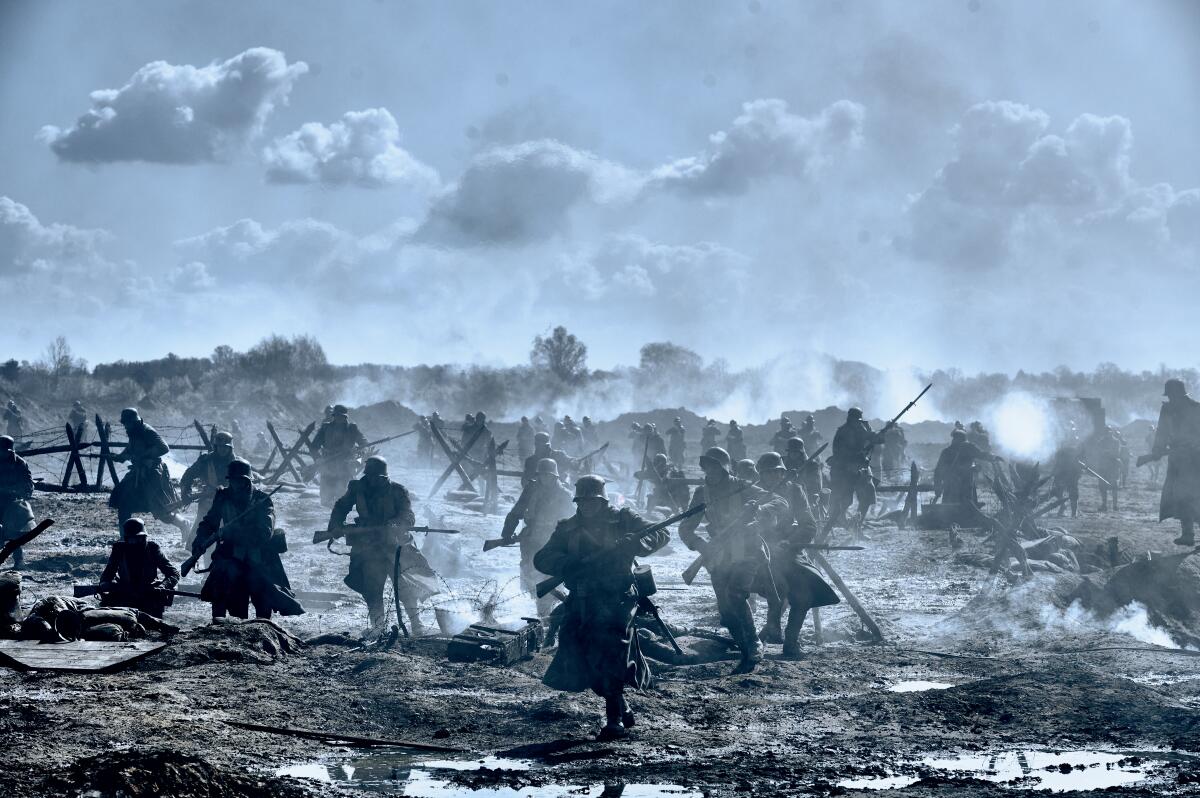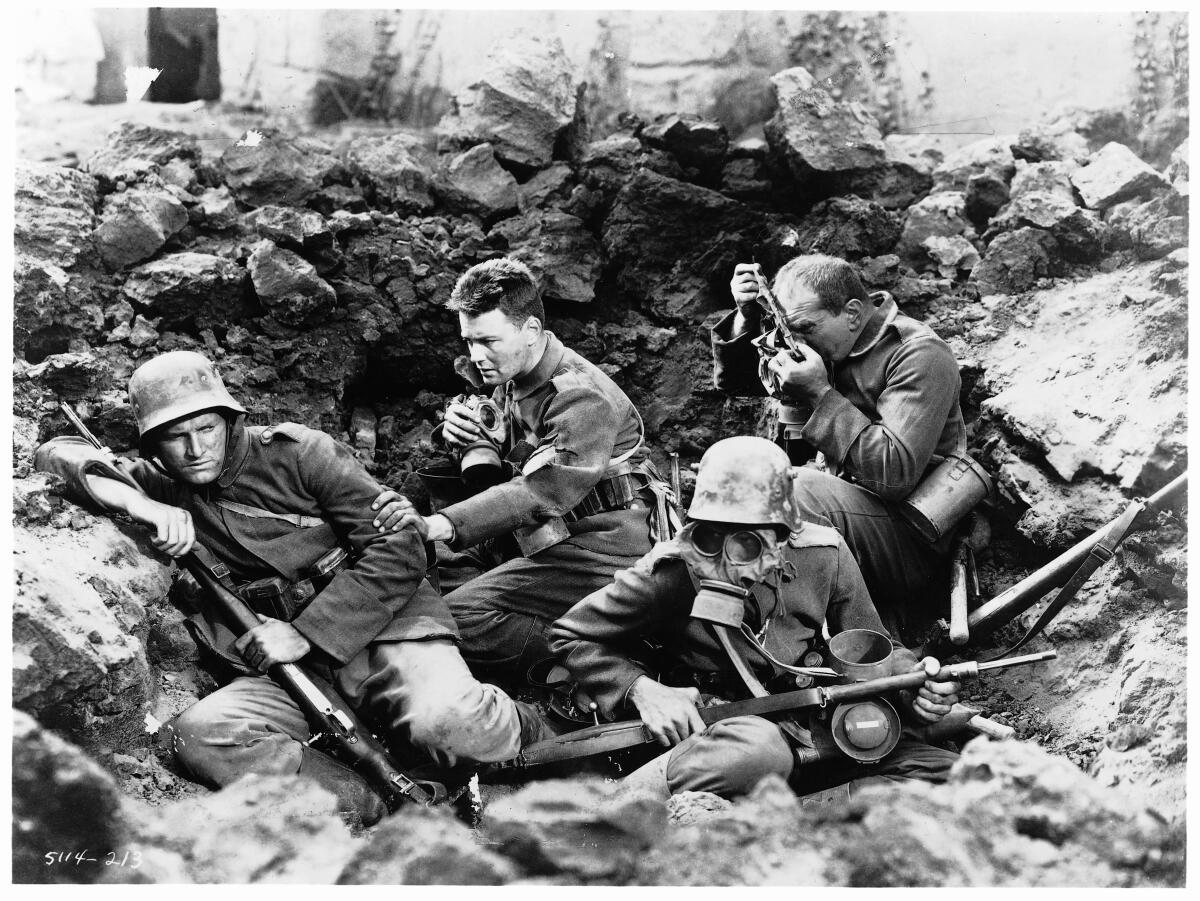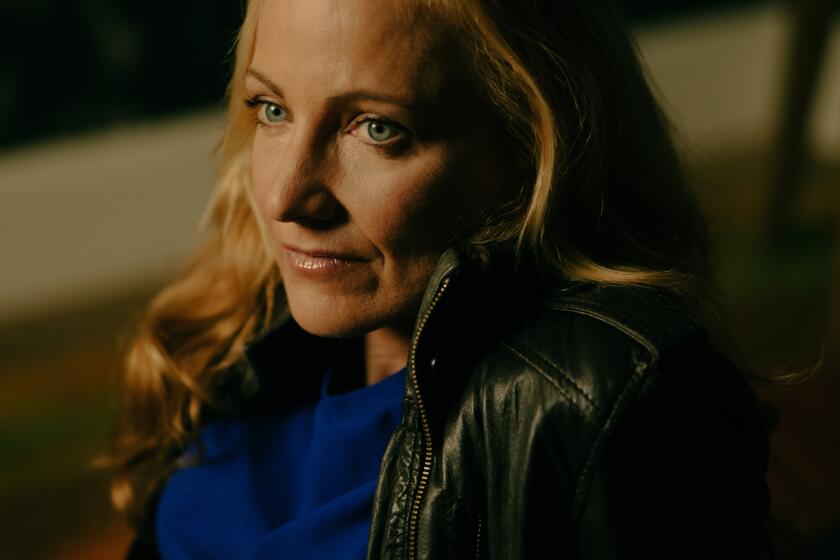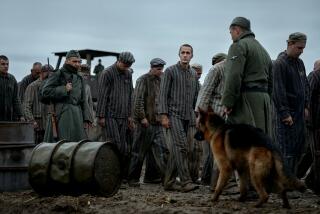Authenticity may be the key difference between 1930 and 2022 versions of ‘All Quiet’

The original “All Quiet on the Western Front,” released in 1930, was the third-ever Oscar best picture winner. Banned in multiple countries, including Germany, Lewis Milestone’s epic World War I film still stands as a blunt antiwar powerhouse, showing the carnage and futility of the Great War as seen through the eyes of young German soldiers (played by American actors) sold on the promise of heroism before the horrible reality of battle knocks them back down to earth and, in most cases, into the grave.
Still widely considered one of the best war movies ever made, Milestone’s film casts a long shadow. Just ask Edward Berger, the director of the new German adaptation of “All Quiet,” which garnered nine Oscar nominations, including one for best picture. His film is based on Erich Maria Remarque’s 1929 novel, not the 1930 film. But as he watched that film in preparation for his own, he still felt the anxiety of influence.
“I love that film,” Berger said in a recent video call from Rome, where he’s shooting his next movie. “But when I watched it, I realized the screenwriters had read the same scenes and sometimes used the same scenes that I was using in my screenplay. I had to take a breath and put it away and just think about it for a moment and find my own way into it again and just say, ‘No, this is our very subjective interpretation of that story.’”

Indeed, the two films are similar in many specifics. Both follow Paul (Lew Ayres in the 1930 film, Felix Kammerer in the new version), a young German soldier who has the idealism pounded out of him by what he experiences and witnesses on the battlefield. Both films capture the sheer horror of trench warfare, and up-close deployment of new weapons, such as mustard gas. Both films depict war as something old men send young men off to die in, though the new film leans into this idea more forcefully and to more chilling effect. (There is also a 1979 TV movie adaptation, directed by Delbert Mann and starring Richard Thomas and Ernest Borgnine.)
Still, these movies were made 92 years apart from each other, in different countries and different film industries. The 1930 “All Quiet” is a Hollywood movie, with American actors playing German soldiers; this was the standard of the time. But it is bold in many respects, starting with the unusually fluid camera work, rare for the early sound era. “It’s a 1930 film, and a lot of 1930 films are awkward where the camera doesn’t move very much,” says Joseph McBride, a film historian and professor at San Francisco State’s School of Cinema. “Cameras in those days were often stuck in booths, but that film is very mobile. It has some wonderful tracking shots.”
The two films also have different stylistic tones. The new “All Quiet” feels lean and relentless, at times almost journalistic, much like Remarque’s novel. It certainly has dialogue, but not as much as Milestone’s film. (McBride points out the 1930 movie’s uncredited dialogue director was George Cukor, who went on to become a Hollywood giant and director of such films as “The Philadelphia Story” and “My Fair Lady”). The older film places more emphasis on the war at home, as when Paul takes leave to his hometown and grows disgusted with everyone who thinks they know what it’s like on the front.
The 1930 movie is also notable for what it almost entirely lacks: music. The sounds of classic Hollywood are nowhere to be found here (although the film was later repackaged with a new score, much to Milestone’s chagrin; a 2006 restoration returned it to its original glory). Volker Bertelmann’s harsh, dissonant score for the new film is among its Oscar nominations.
Lesley Paterson takes us inside the process of writing ‘All Quiet on the Western Front’ and how she found the key to unlocking the story.
The 1930 film was the splashiest and probably the best World War I movie of its time, but it wasn’t the first. The war ended in November 1918, and the films soon followed. McBride ticks off some of the best: “The Big Parade” (1925), King Vidor’s drama starring John Gilbert as an American soldier who falls in love with a Frenchwoman before enduring his own front-line terrors; “Four Sons” (1928), an early John Ford movie about three German soldiers and their brother who ships off to America; and “Isn’t Life Wonderful” (1924), D.W. Griffith’s film about a family of Polish refugees trying to get by amid the economic hardships of postwar Germany. There’s also G.W. Pabst’s excellent 1930 German film “Westfront 1918,” released the same year as “All Quiet,” which embraces social realism on the battlefield and back at home.
But “All Quiet” still stands out. It was doing things that would have been impossible in the American film industry just a few years later. The film’s frank depiction of battle and antiwar tone wouldn’t be allowed when the Motion Picture Production Code took effect in 1934. McBride points to one shot in
particular, showing a pair of disembodied hands clinging to a wire, the last remnants of a soldier’s body blown to bits. “Milestone heard about that detail from one of the veterans he spoke to and he put it in the film,” McBride says. “It has a tremendous authenticity.”
Authenticity may be the biggest difference between the two “All Quiet” films. The new one is a German adaptation of a German story, starring German actors. The war has a very specific meaning in German history. The disgrace and anger over the outcome and treaty terms would give way to the rage and hatred that became Nazism. This legacy is a big part of what drove Berger to make his film.
“It touches something inside of me that has to do with the guilt and the shame and a certain responsibility that I feel I have towards history,” Berger says. “I wanted to show our own angle and make a very German movie in German with German actors from a German novel, and infuse all that feeling that we grew up with into this movie.”
That’s something that a classic Hollywood movie, for its all of its craft, glory and historical significance, just can’t do.
More to Read
From the Oscars to the Emmys.
Get the Envelope newsletter for exclusive awards season coverage, behind-the-scenes stories from the Envelope podcast and columnist Glenn Whipp’s must-read analysis.
You may occasionally receive promotional content from the Los Angeles Times.











